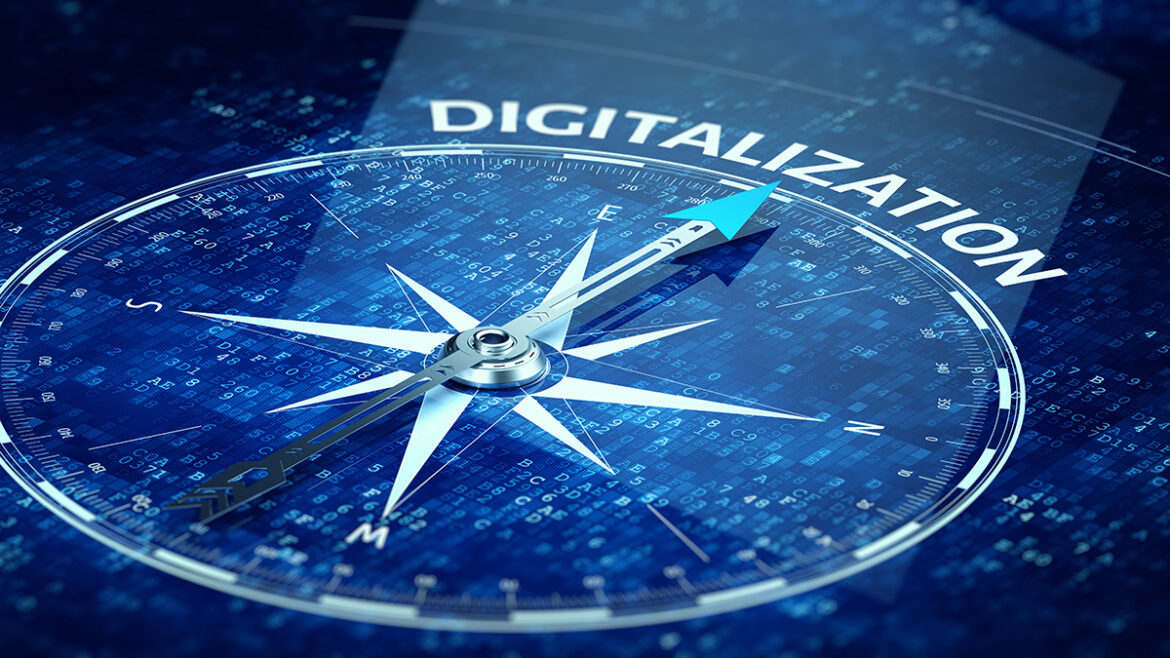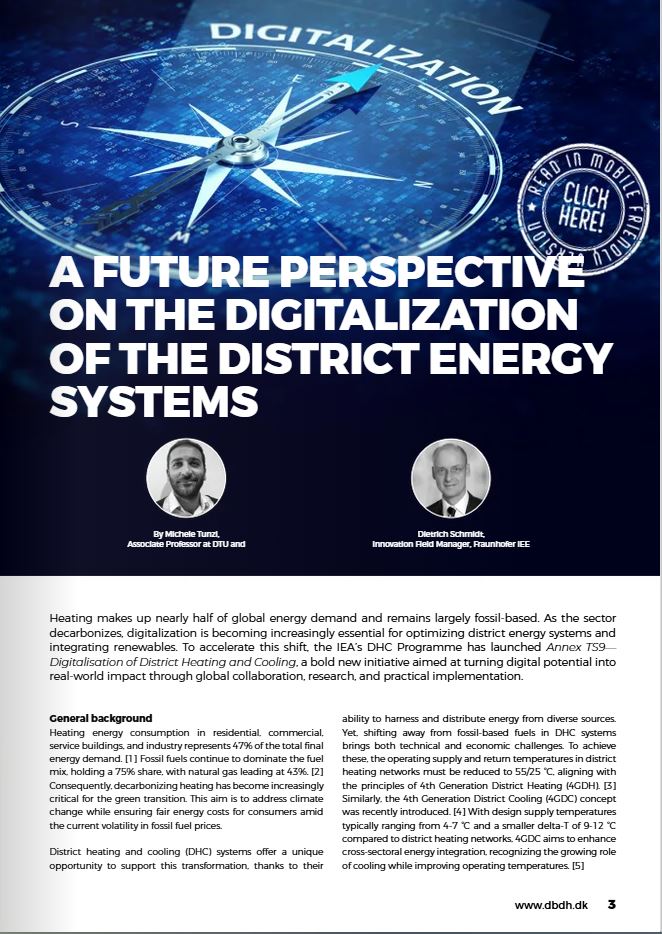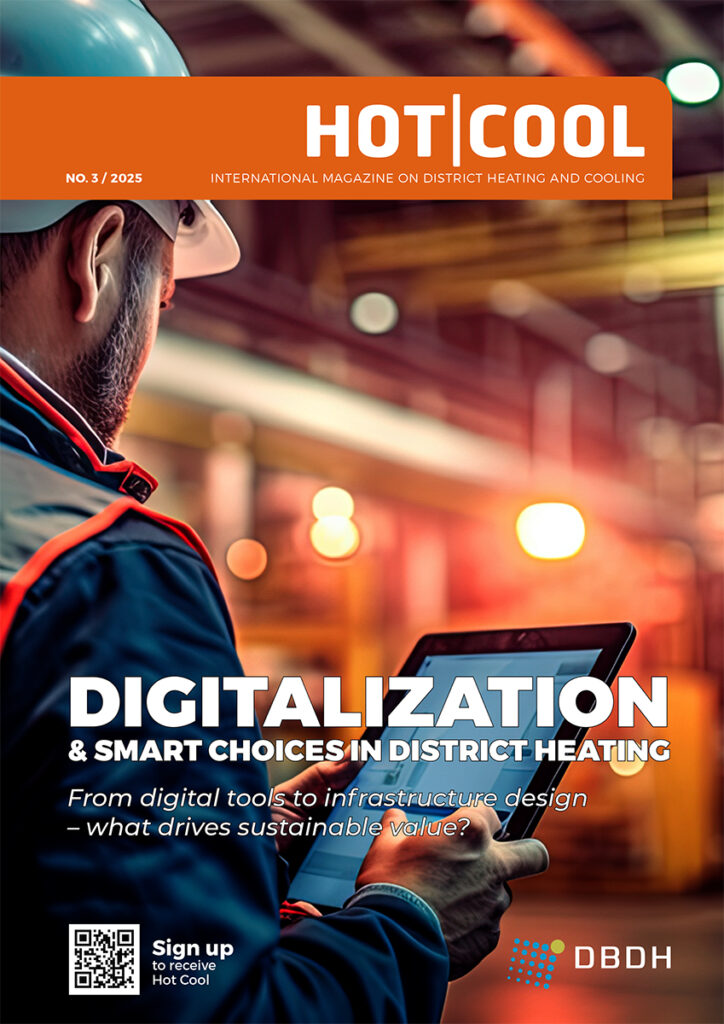Heating makes up nearly half of global energy demand and remains largely fossil-based. As the sector decarbonizes, digitalization is becoming increasingly essential for optimizing district energy systems and integrating renewables. To accelerate this shift, the IEA’s DHC Programme has launched Annex TS9—Digitalisation of District Heating and Cooling, a bold new initiative aimed at turning digital potential into real-world impact through global collaboration, research, and practical implementation.
By Michele Tunzi, Associate Professor at DTU and Dietrich Schmidt, Innovation Field Manager, Fraunhofer IEE
Published in Hot Cool, edition no. 3/2025 | ISSN 0904 9681 |
General background
Heating energy consumption in residential, commercial, service buildings, and industry represents 47% of the total final energy demand. [1] Fossil fuels continue to dominate the fuel mix, holding a 75% share, with natural gas leading at 43%. [2] Consequently, decarbonizing heating has become increasingly critical for the green transition. This aim is to address climate change while ensuring fair energy costs for consumers amid the current volatility in fossil fuel prices.
District heating and cooling (DHC) systems offer a unique opportunity to support this transformation, thanks to their ability to harness and distribute energy from diverse sources. Yet, shifting away from fossil-based fuels in DHC systems brings both technical and economic challenges. To achieve these, the operating supply and return temperatures in district heating networks must be reduced to 55/25 °C, aligning with the principles of 4th Generation District Heating (4GDH). [3]
Similarly, the 4th Generation District Cooling (4GDC) concept was recently introduced. [4] With design supply temperatures typically ranging from 4-7 °C and a smaller delta-T of 9-12 °C compared to district heating networks, 4GDC aims to enhance cross-sectoral energy integration, recognizing the growing role of cooling while improving operating temperatures. [5]
However, unlocking the full potential of these systems requires more than technical adjustments. As DHC networks become more complex and flexible, digital technologies are emerging as the backbone of smarter, more responsive energy systems. From optimizing system performance to integrating low-carbon heat sources more effectively, digital tools are not just helpful—they are key enablers of an efficient, resilient, and climate-friendly thermal energy future. [6]
Role of Digitalization for District Energy Systems
Digitalization is increasingly recognized as a key enabler in the evolution of DHC systems. It supports improved system management, enhances operational efficiency, and facilitates the integration of low-carbon energy sources. However, despite its high potential, the development and deployment of digital solutions in DHC networks remain at a relatively early stage. In most cases, their application is still limited to pilot projects or specific system components rather than being fully embedded across the entire network.
Traditionally, DHC systems have operated with minimal control mechanisms, primarily focused on meeting supply requirements while balancing economic and environmental considerations. Conventional management approaches provide limited insights into the actual behavior of the network, including heat plant performance, return temperature patterns, power consumption, or time-dependent demand profiles. Improving generation and network efficiency requires more detailed data and greater system flexibility, including the use of storage technologies.
These tools can enable peak shaving, reduce dependence on expensive peak-load boilers, and better integrate fluctuating heat sources, such as solar thermal and power-to-heat applications. Existing projects already demonstrate the added value of digital monitoring in optimizing system operation under varying conditions.
In line with developments in other sectors, the adoption of information and communication technologies is contributing to the more efficient operation of DHC systems through real-time data acquisition and analysis. The transition has been supported by regulatory frameworks, such as the European Union’s Energy Efficiency Directive (EED) 2012/27/EU and its 2018 revision, which introduced requirements for remotely readable meters.
Since October 2020, all newly installed meters must allow for remote reading, and existing devices are being gradually upgraded. The most recent revision, Directive 2023/1791, further promotes the modernization of district energy systems through the “Efficient District Heating” framework, aiming to increase the share of renewable energy and waste heat while phasing out fossil fuels by 2050.
The shift from manual meter readings to automated data collection also creates opportunities for more advanced energy system monitoring and control. Technologies such as smart meters, thermostats, and sensors are already widely available and deployed, creating a foundation for further digitalization.
These technologies can enable better system diagnostics, facilitate demand-side management, and support future developments in artificial intelligence (AI) and digital twin applications. [7] While AI and machine learning (ML) methods are not yet widely implemented in routine DHC operations, their potential in forecasting energy demand, optimizing production schedules, and improving fault detection is being increasingly explored.
Similarly, digital twins—virtual models capable of simulating the behavior of real-world systems—are emerging as a promising tool for enhancing the design, control, and performance evaluation of DHC systems. Current research focuses mainly on enhancing simulation accuracy, scheduling, and control strategies. However, challenges remain, particularly regarding data quality, integration with legacy infrastructure, and computational requirements. These aspects highlight the importance of reliable and high-resolution data for accurately representing and managing the dynamic behavior of DHC networks.
Future Outlook and New Initiative of the International Energy Agency
As district energy systems evolve to meet the demands of a future energy landscape increasingly shaped by renewable sources, digitalization is emerging as a critical enabler. To support this transition, the International Energy Agency’s Technology Collaboration Programme on District Heating and Cooling (IEA TCP DHC) is advancing a focused initiative to develop, integrate, and demonstrate digital solutions in district heating and cooling systems.
Recognizing that digitalization will play a central role in optimizing system operation and enhancing energy efficiency across production, distribution, and end-use levels, IEA DHC has launched Annex TS9, titled “Digitalisation of District Heating and Cooling: Improving Efficiency and Performance Through Data Integration.”
This initiative provides a concrete response to many of the challenges discussed in earlier sections of this article, offering a structured framework to advance digitalization in DHC systems. While digital technologies have already shown promising results in isolated applications, broader deployment remains limited.
Annex TS9 aims to address this gap by facilitating more effective communication between different system domains and stakeholders – overcoming existing silos, and supporting the development of integrated digital infrastructures. In doing so, the project contributes to the transition towards 4GDH systems and promotes data-driven decision-making to support system planning and operation.
The project adopts a comprehensive perspective, considering the entire energy chain—from energy generation and network distribution to end-use and consumer engagement—applicable to both established and emerging DHC markets. A key strength of Annex TS9 is the close collaboration among technology providers, utilities, and academic partners, aiming to accelerate the translation of research outcomes into practical applications.
The core objectives of Annex TS9 can be summarized as follows:
- Promote awareness of the benefits of data and signal integration across system domains, supported by robust and resilient digital infrastructure;
- Identify and collect solutions for interoperability, data communication protocols, and standardization across DHC components and actors;
- Assess non-technical enablers and barriers, such as business models, legal frameworks, and policy instruments that influence digitalization uptake;
- Provide an updated overview of the state of the art in DHC digitalization, including current R&D activities, demonstration projects, and real-world case studies.
Further and actual information about the project can be found on the homepage of the project:
https://www.iea-dhc.org/the-research/annexes/2024-2028-annex-ts9.
The mission of the IEA DHC Annex TS9 project is to promote more cooperative efforts in the digitalization of district heating while providing a forum for global knowledge sharing. Interested stakeholders from industry, academia, and utilities are encouraged to engage in this activity and contribute to the project’s activities.
Concluding remark
Digitalization represents a key enabler in the transition toward more efficient, flexible, and low-carbon DHC systems. As energy systems grow in complexity and the need for integrating variable renewable heat sources increases, digital tools will play an increasingly important role in supporting system optimization and operational reliability.
While ongoing developments show promising potential, broader deployment and collaboration remain essential. Stakeholders interested in contributing to this effort are encouraged to engage with the IEA DHC Annex TS9 initiative or reach out to the authors for further collaboration opportunities.
Acknowledgment
The work within IEA DHC Annex TS9 is a collaborative effort by numerous experts from various countries. The authors would like to thank all those who are contributing to the project. This cooperative research work is funded by various national sources and from industry partners. The authors would like to thank for the financial support.
For further information, please contact Michele Tunzi at mictun@byg.dtu.dk
References
[1] European Commission, “An EU Strategy on Heating and Cooling.” Accessed: Aug. 10, 2018. [Online]. Available: https://ec.europa.eu/energy/en/topics/energy-efficiency/heating-and-cooling
[2] K. Lukas et al., “Renewable Space Heating under the Revised Renewable Energy Directive,” 2021.
[3] H. Lund et al., “4th Generation District Heating (4GDH). Integrating smart thermal grids into future sustainable energy systems.,” Energy, vol. 68, pp. 1–11, 2014, doi: 10.1016/j.energy.2014.02.089.
[4] P. A. Østergaard et al., “The four generations of district cooling: A categorization of the development in district cooling from origin to future prospect,” Energy, vol. 253, Aug. 2022, doi: 10.1016/j.energy.2022.124098.
[5] M. Jangsten, P. Filipsson, T. Lindholm, and J. O. Dalenbäck, “High-Temperature District Cooling: Challenges and Possibilities Based on an Existing District Cooling System and its Connected Buildings,” Energy, vol. 199, May 2020, doi: 10.1016/j.energy.2020.117407.
[6] D. Schmidt, M. Blesl, E. Widl, M. Vallee, D. Vanhoudt, and M. Tunzi, “IEA DHC TS4 Guidebook: Digitalization of DHC System,” 2023. [Online]. Available: www.iea-dhc.org
[7] J. Volt et al., “DISTRICT HEAT AND COLD MANAGEMENT IN THE EUROPEAN UNION: Status report on technology development, trends, value chains and market,” 2022. doi: 10.2760/168004.
“A Future Perspective on the Digitalization of the District Energy Systems” was published in Hot Cool, edition no. 3/2025. You can download the article here:
Did you find this article useful?
Subscribe to the HOT|COOL newsletters for free and get insightful articles on a variety of topics delivered to your inbox twice a month!


